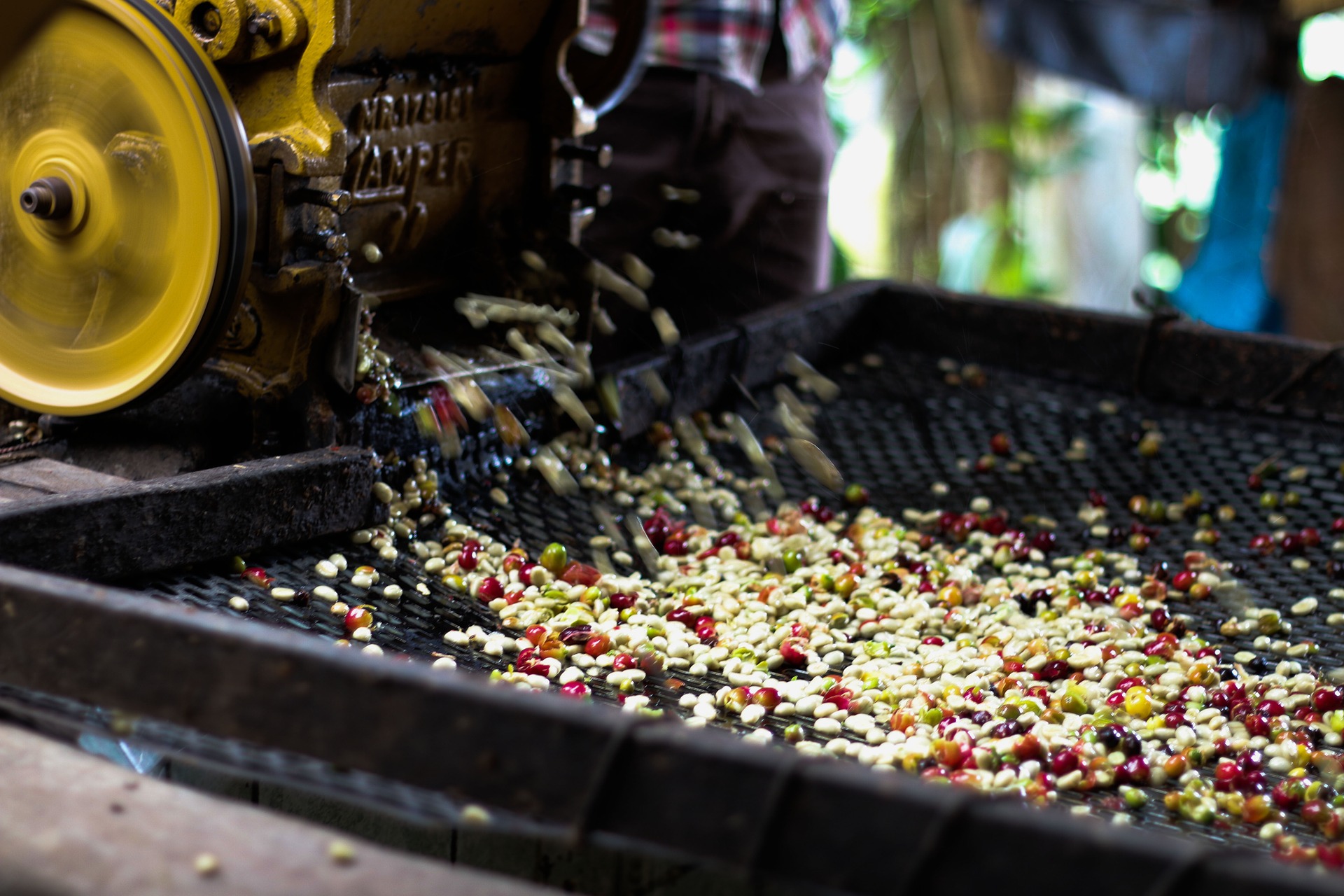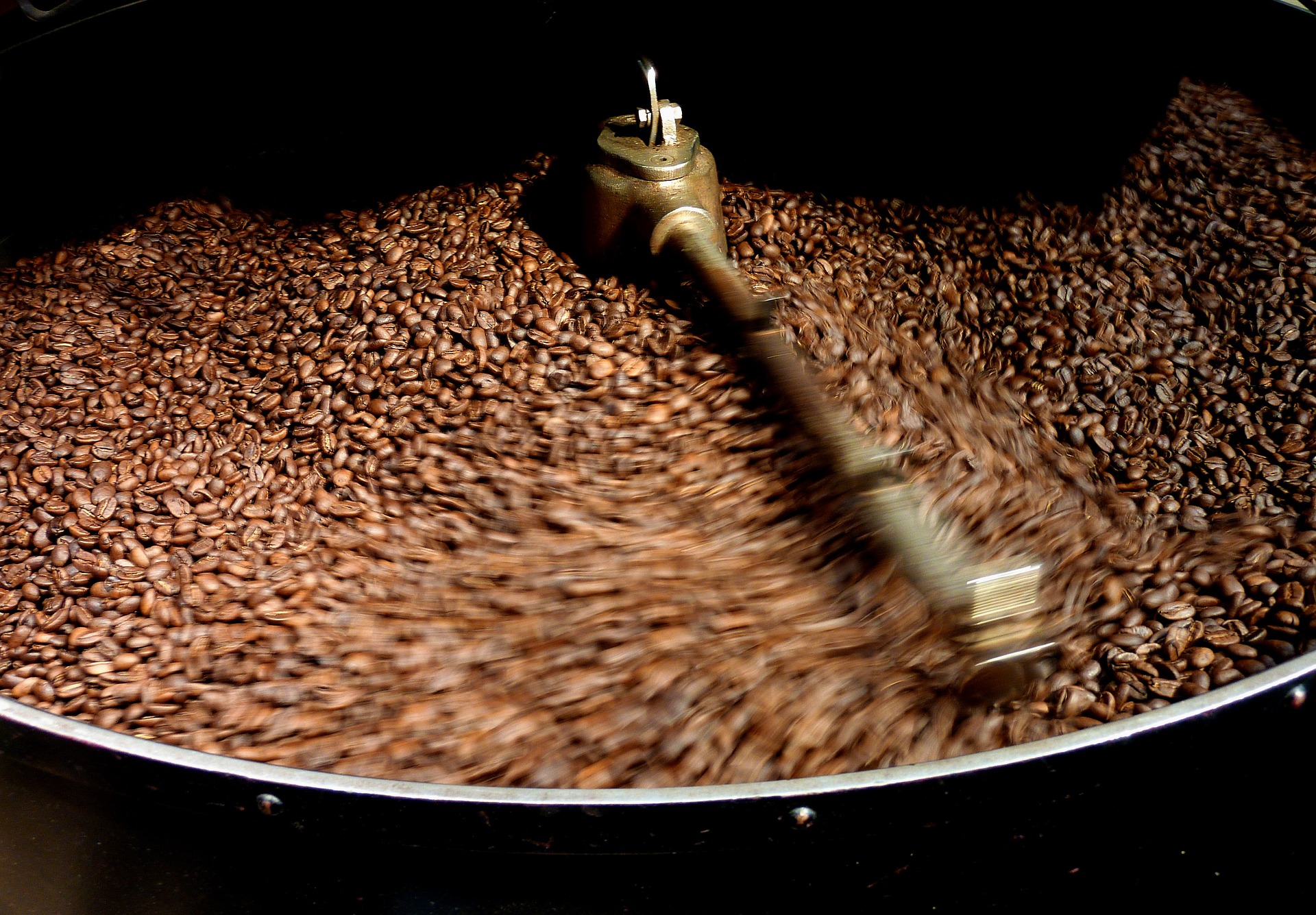Process
Plant description
The most important commercial species of coffee is Arabic coffee (Coffea arabica L.). There’s great morphological variation in cultivars; generally speaking, however, Arabic coffee is a five meters tall shrub with opposite, broad, dark green leaves. Its flowers are white and fragrant. Coffee fruits are known as cherries and have two seeds that are used for the coffee drink.
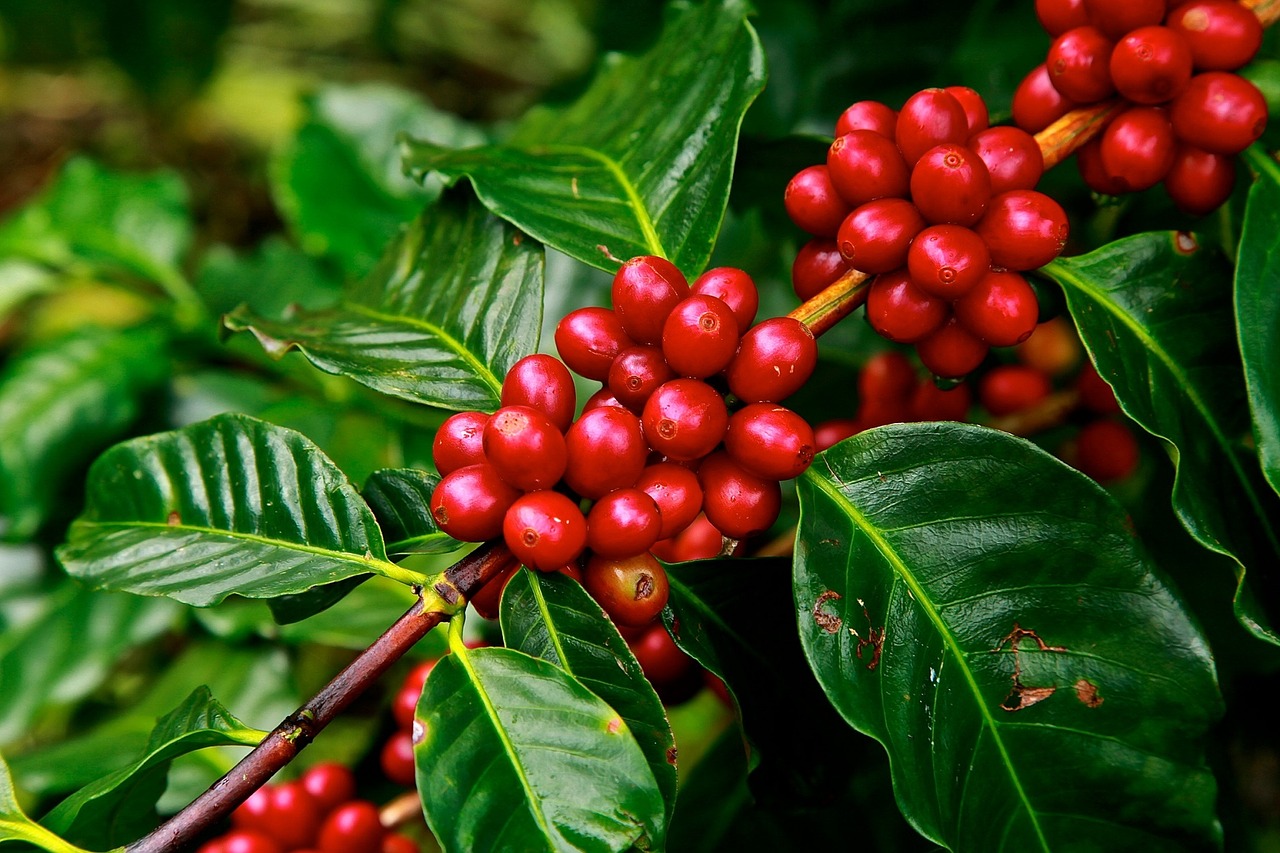
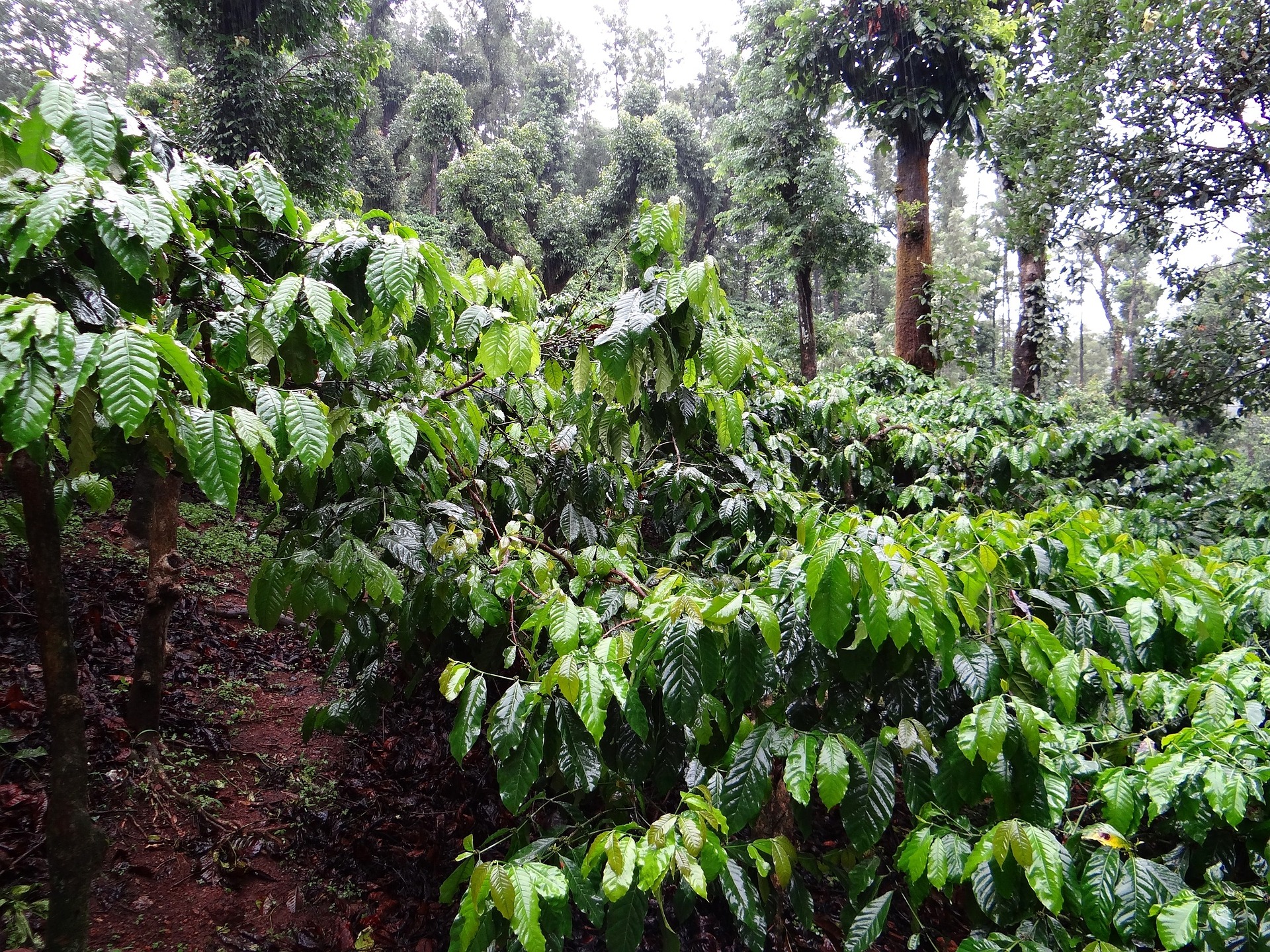
Coffee requirements
Coffee is cultivated in the so-called “Coffee belt” between 25° N and 30 °S. Arabic coffee grows best at a high altitude, in places with an average annual rainfall between 1200-2200 mm and an average annual temperature between 15-24 °C. It requires rich, acidic and well-drained soils. Soil type, climate, rainfall, solar radiation and altitude are the main environmental factors affecting coffee flavor.
Propagation
Coffee seeds are planted in shaded nurseries and the seedlings receive special care for six to twelve months prior to being planted in their definitive location within the plot.

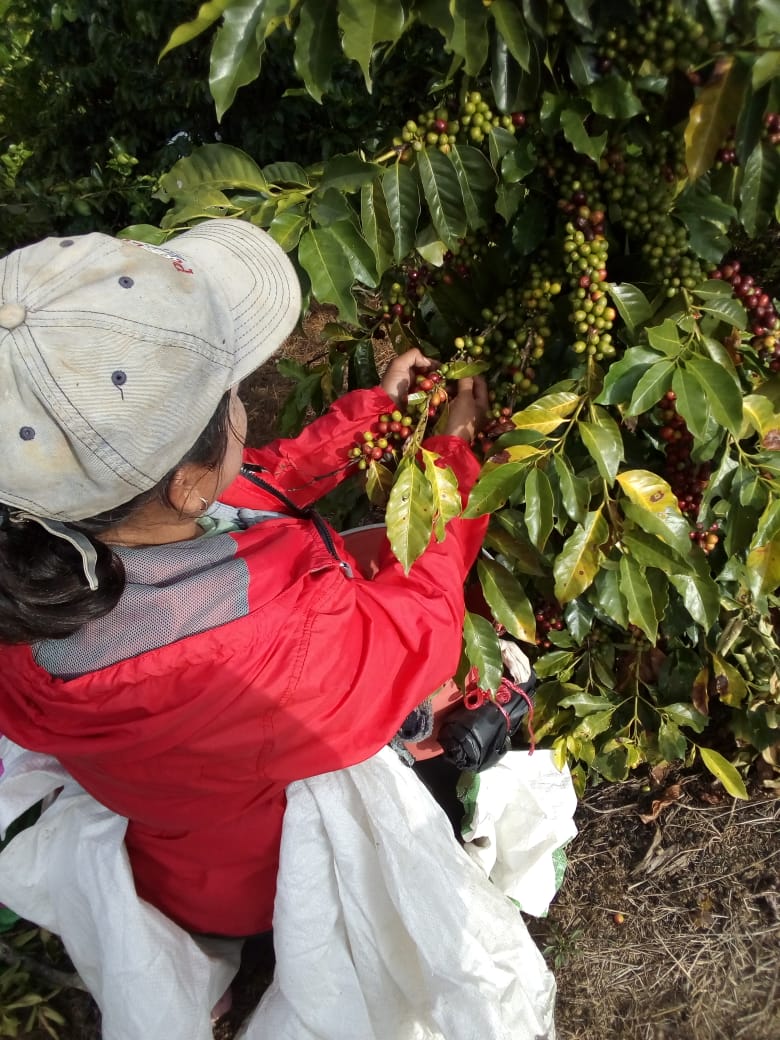
Harvesting
Harvest season depends on the altitude and location of the coffee plantations; in Mexico, it takes place between August and March. The same coffee shrub is visited plenty of times during the harvest season, and ripe coffee cherries are harvested when they turn bright red, purple or yellow depending on the cultivar.
Curing
There are three main methods for curing coffee: the wet process, the dry or natural process and the honey process. The wet process is the most common in Mexico and it produces the so-called “washed coffee”. It consists on the following steps:
1. Preliminary wash or first sorting: : Bad or unripe fruits are removed in water tanks.
2. Depulping: The pulp is removed with special depulping machines one day after harvesting at most.
3. Fermentation: The beans are fermented in large tanks, stripped of their mucilage and high-pressure washed.
4. Drying: The beans are dried on “asoleaderos”, sieves or through machines. This step results in “parchment coffee”.
5. Hulling: Hulling machines are used to remove the parchment skin from the beans, resulting in “green coffee”.
6. Sorting: Coffee beans are sorted by color, shape and size.
7. Roasting: Green coffee is roasted with machines called coffee roasters.
8. Grinding
The dry or natural process skips the washing and depulping steps, while the honey process does not involve demucilaging the beans.
